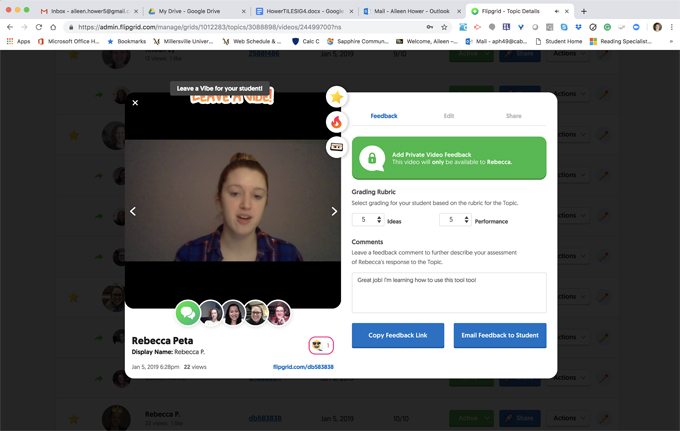Earlier this year, I embarked upon the task of designing one of our graduate courses to be completely online. This cannot always be done with a master’s of reading program, but students see other online programs and desire this format.
Additionally, spring weather in Pennsylvania can be challenging; I have already lost four days of classes and it’s only the beginning of February! Certification tests and future instructors need all the content covered. I had to find a way to teach, even if I could not be face to face with my students. Therefore, I sought out technology to support synchronous and asynchronous learning.
Synchronous video chatting
This past winter, at the start of our winter course (and to close it out as well), I used Zoom, a video conferencing app that was recently acquired by our university. I have also used Zoom to attend mandatory biannual meetings with an online professional development organization I worked for in the past.
I prefer to use Zoom because it allows you to mute attendees to avoid distracting background noise; to foster interaction by using a polling tool, the results of which can be shared with the entire class; and to encourage students to ask questions and post responses without interrupting the speaker using the chatting feature. I was also able to record our live session in case a student wanted to revisit a lesson or could not attend.

Zoom also automatically saves a .txt receipt of any chatting that takes place during the session.

After my third set of classes was cancelled this past week, I used an intriguing feature that allows the instructor to divide students into breakout rooms. This was a great success. For one class, I manually and strategically broke students into groups so that they could present lesson plan ideas with each other. With another class that was being quiet (there were 21 students in attendance), I had Zoom break them into pairs for discussion. I could visit each of the breakout rooms, send all the rooms an announcement, and reunite the whole group with just the touch of a button.
My mid-level education students shared that Zoom offered more opportunities to interact with others as opposed to just accessing static information online. Some of my students who commute long distances expressed gratitude that they could attend a Zoom session instead (I offered to add Zoom to a face-to-face class for students facing barriers to travel).
Online discussion tools
Of course, I don’t always plan for us to be synchronous. I have tried to mix up the different tools that I use for asynchronous discussion and interaction with the content of my courses.
In addition to having students use the typical discussion board through the university’s online management system, I have been a long-time fan of Padlet, a digital corkboard where students can post through a variety of means (as shown in the figure below).

With Padlet, students can reply to each other’s post with a comment, whereas before, they would have to create a new post and name it to grab the attention of the person to whom they were responding. Students appreciate the opportunity to share a favorite resource that supports the content we are learning.
Communicating online is convenient, but it can also be slightly impersonal, until students get to know each other. Therefore, I have recently become a big fan of Flipgrid.
Flipgrid allows students to discuss a topic for as little as one minute and up to five minutes. Not only do students reply to each other with their own video, they can also respond with “vibes,” emojis, and stars. Its interactive nature and resemblance to social media platforms makes Flipgrid one of the “coolest” tools available.

With Flipgrid, I got to know my students better through listening to and watching them. It was also a personal way to hear their ideas.
This spring, I have given students the opportunity to participate in a blog run by one of the Keystone State Literacy Association’s local chapters. A different teacher/author poses questions about the week’s chapter in a blog post, and all are encouraged to post their thoughts/reactions and reply to others. Although this takes a very similar format to our discussion boards, the opportunity to interact with individuals outside of class adds a layer of meaning and interaction that I would not otherwise be able to embed in my class.
One colleague shared her frustration via social media that students as young as elementary school should not lose days of learning due to weather. Rather, they should know their learning can just take on a different format. Many of the same tools I am working to integrate into my college classes can be used productively with younger students. My colleague argued that it should become the standard to use virtual tools rather than miss learning opportunities because of closed facilities. After my experimentations this winter and spring, I would concur. I encourage you to explore these tools in your classroom as well!
Aileen P. Hower is an assistant professor of literacy and the Graduate Coordinator for the Masters in Language and Literacy at Millersville University in Pennsylvania where she teaches at the undergraduate and graduate levels. She also offers a summer literacy institute in writing through her university. In addition to teaching, she is the president of the Keystone State Literacy Association and was the conference chair for the KSRA 50th Annual Conference in Hershey, PA, in 2017. Aileen is a proud member of TILE-SIG. You can find her on Twitter at @aileenhower or on her blog at aileenhower.wordpress.com.